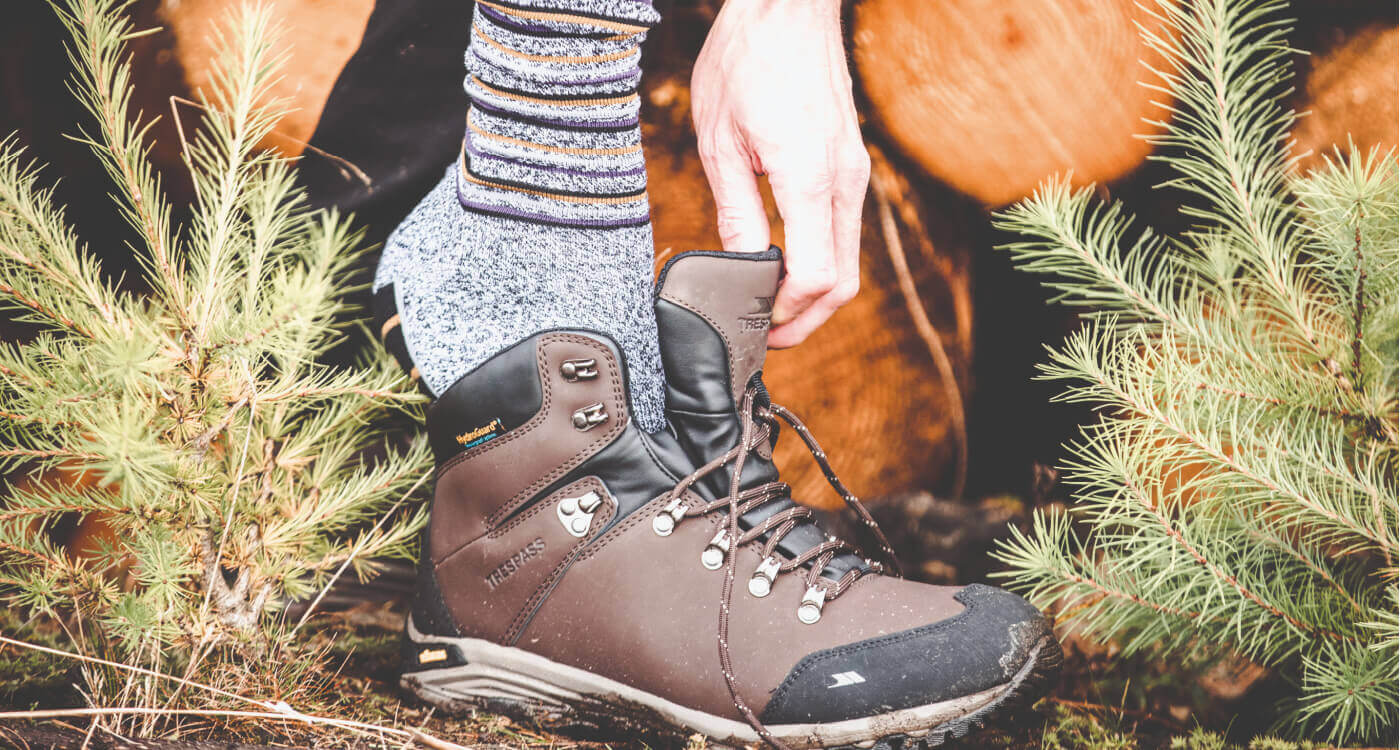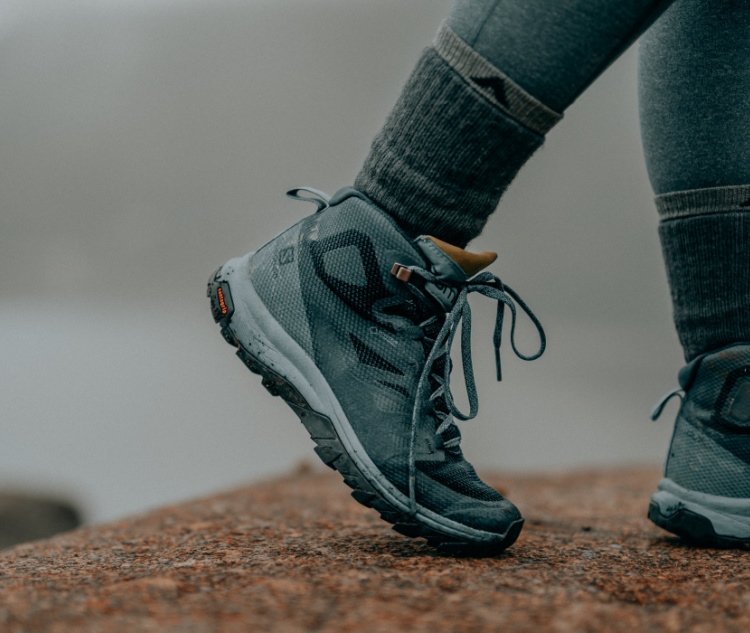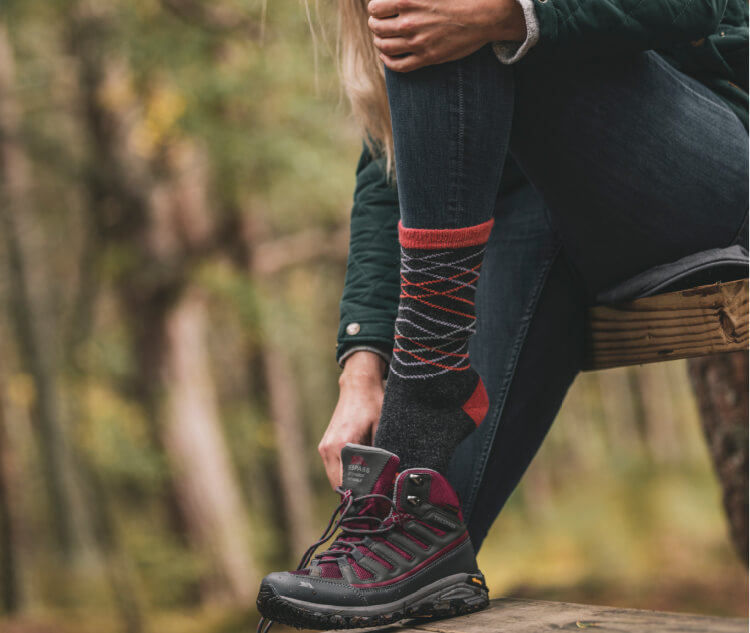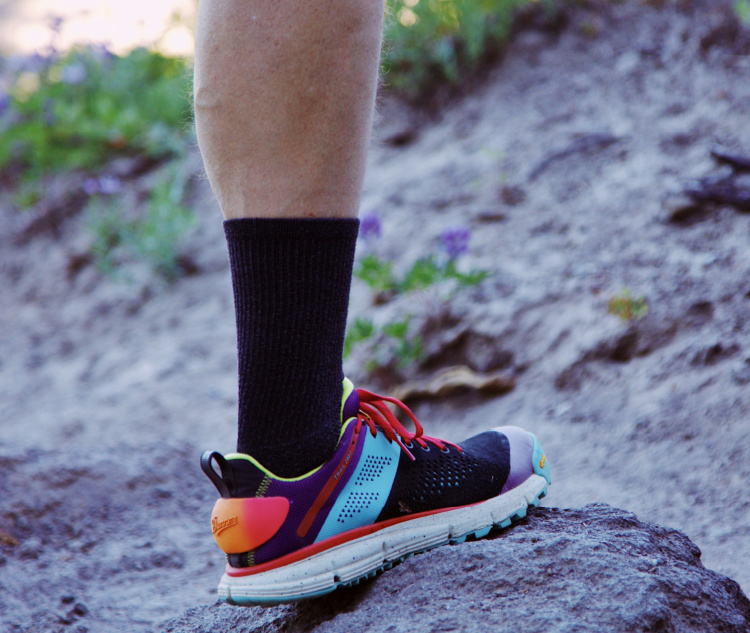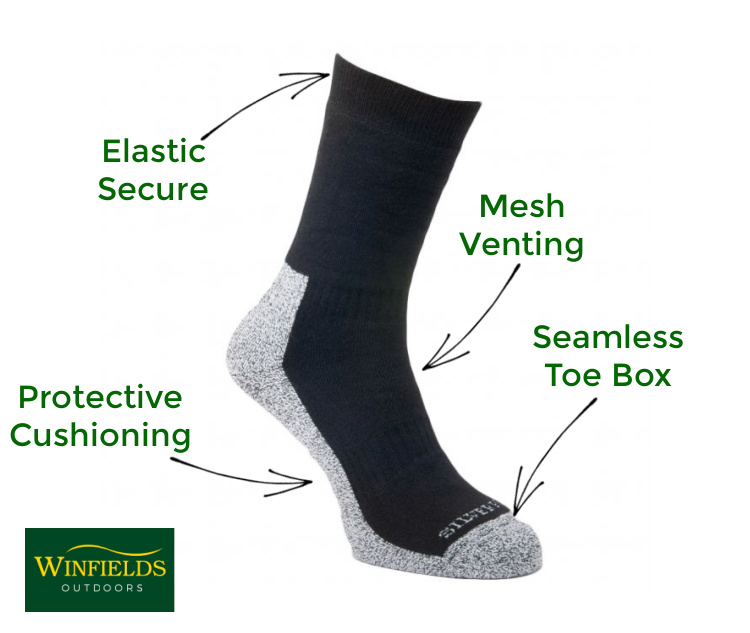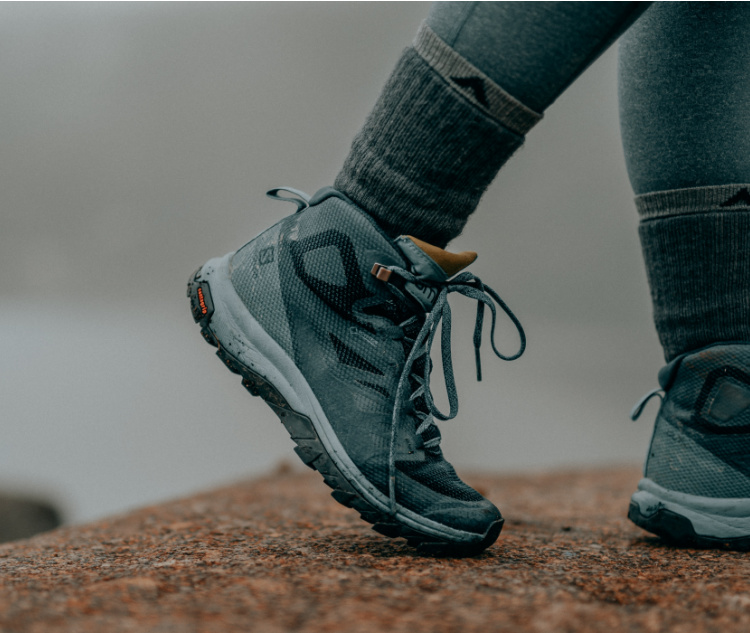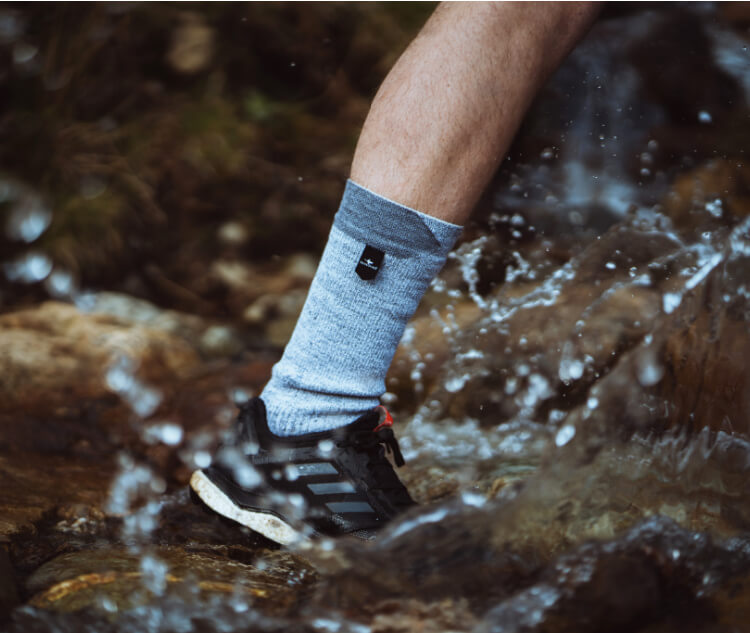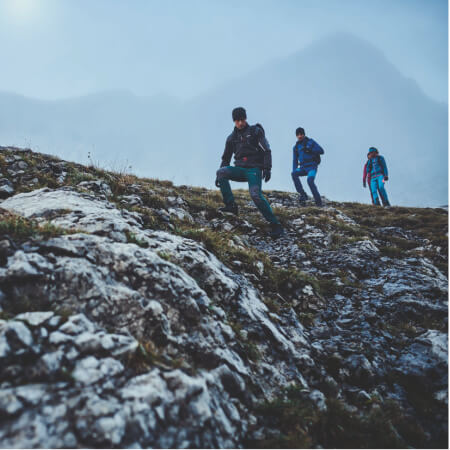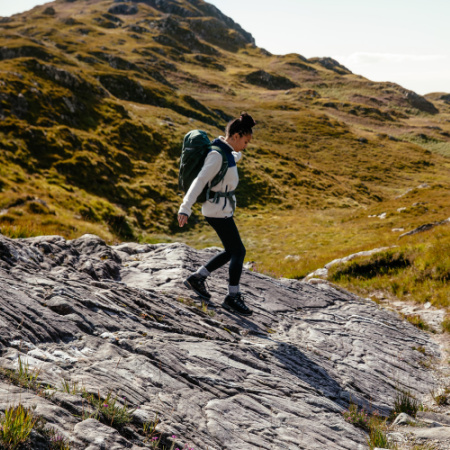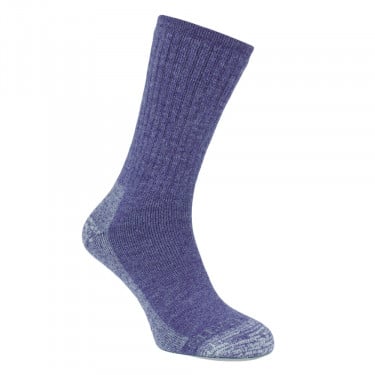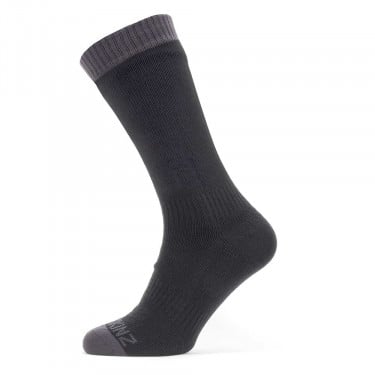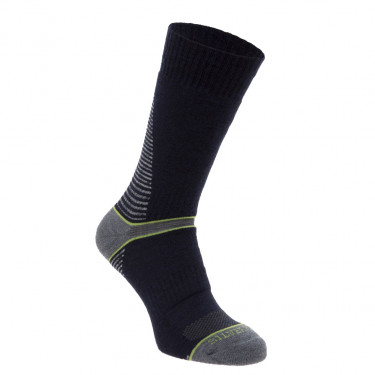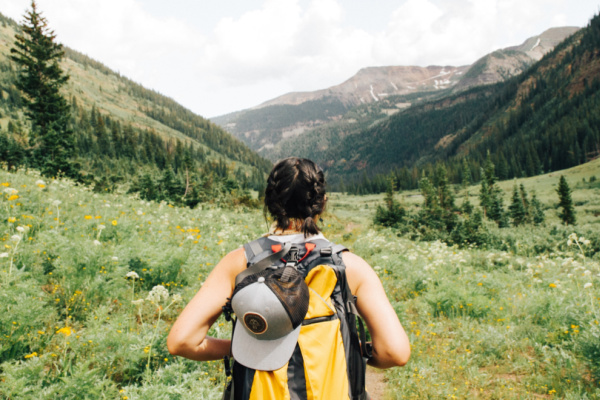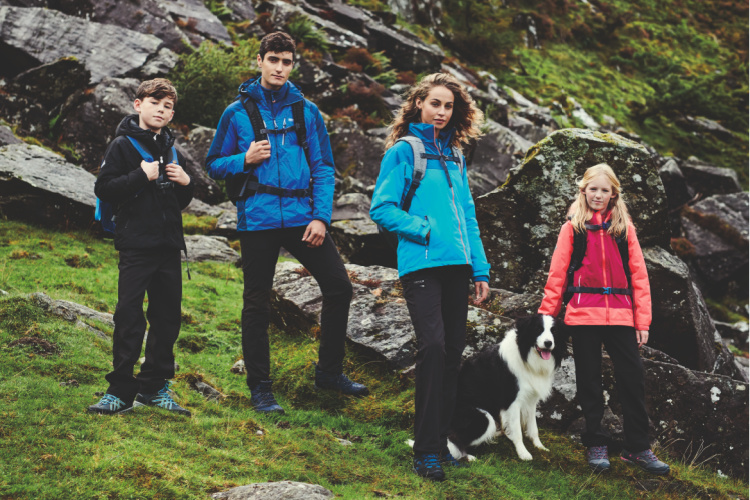Waterproof & Walking Socks Guide
There are few things worse than cold and damp feet when hiking. Not only is it uncomfortable, but it can also be potentially dangerous if the weather is cold. More than that, having the right walking socks help when buying your hiking boots.
So, we’ve produced a complete guide to walking and waterproof socks to ensure your feet stay warm and dry for any outdoor activity. Read on to find out more about walking and waterproof socks…
Choosing socks based on activity & footwear
When shopping for outdoor walking socks, you should always choose them based on the activity you’ll be doing and the footwear. Having the right socks can make you feel much more comfortable and allow you to avoid pain or injury.
Your socks also depend on the type of footwear you choose. For example, hiking boots are often built to accommodate a thicker sock for insulation and protection purposes. However, trail running shoes are made with a narrower fit for sensitivity when out on the trails, requiring a well-fitting, thinner sock with cushioning in high-impact areas.
It’s the same principle for choosing socks based on activities. For example, you wouldn’t wear running socks while out hiking because the cushioning and warmth wouldn’t be enough to keep you comfortable.
Likewise, wearing hiking socks while running because the warmth and cushioning would be too excessive for what you need and make for an uncomfortable and sweaty run. This could more than likely lead to blisters.
Blisters and socks
If you’ve ever gotten blisters while walking or on an activity, you’ve probably been quick to blame your boots or footwear. Well, it could actually be your socks that are the problem!
What causes blisters?
There are several reasons a blister can form while walking. However, they are usually caused by either excess heat, moisture or pressure.
These factors then affect your skin through the friction from your feet moving within your footwear. The most obvious reason this can happen is through poorly fitting boots where your feet move within them, rubbing on the heel or toes.
Other causes of blisters include:
- Thin or poor-fitting socks.
- Wrinkled socks – including the seam.
- Excessive sweat – being held by your socks.
- Wet feet from rain or river crossings.
- Not breaking-in new boots – particularly leather boots.
Preventing blisters with the right socks
Socks are a key part of staving off blisters – either from being too thick or thin, the seam rubbing on your toes or retaining moisture.
Cotton socks, for example, tend to hold moisture next to your skin, which, when combined with friction from walking, causes blisters to form. So, we would recommend moisture-wicking polyester or wool walking socks.
Alternatively, you could try thin merino wool or polyester liner socks underneath a second pair of thicker socks.
It is always important to consider the thickness of your socks when fitting your footwear. They can change the volume of your foot – making it prone to rubbing and extra pressure against your boots. You also need to consider insulation and how this can affect sweat building up.
Walking sock materials
The material of your walking socks makes a difference to your comfort while moving around. The most common materials you’ll find for socks are cotton, wool, merino wool and synthetic fabrics.
Cotton socks
These are a popular casual choice, but they’re not recommended for certain strenuous activities. This is because they can struggle to manage moisture and retain heat.
This can lead to discomfort and blistering. Cotton is a cheaper and more comfortable material, so most walking brands would use it in a mixture of materials to balance out its negatives. They can make for a great pair of warmer-weather walking socks for lighter activities.
Wool socks
Wool is a natural material that retains heat when wet – making it a popular material for socks. Wool is often used alongside other materials as it doesn’t have much elasticity alone.
Wool socks don’t dry out easily and can wear out quickly. The more wool used, the warmer the socks will be, which is why it’s often a material found in cold-weather walking socks.
Merino wool
Merino wool is a fantastic material for socks. It is a type of wool, but it’s a fine wool that is also often found in baselayers due to its ability to manage moisture from sweating. The fact that merino is such fine wool also means that it won’t be as itchy or irritable as standard wool.
Synthetic materials
Synthetic fabrics can offer better structure, durability, breathability, and/or be waterproof. Synthetics can be in two types:
- Insulating synthetic materials: these are often used in conjunction with wool to increase structure and insulation while providing resistance from rubbing.
- Wicking synthetic materials: these materials are found in liners and socks to enhance wicking performance, keeping your feet cool and comfortable during activities.
Walking sock weights
Weight should always be considered when choosing a new pair of socks for outdoor activities. Usually, the weight of a sock impacts its overall thickness, which will affect how a hiking boot, walking shoe or trail running shoe fits.
There are three main weights of outdoor socks:
Lightweight walking socks
Lightweight walking socks are designed for warmer climates and trails, making them great for keeping your feet cool. They keep the weight down by not being as cushioned as other socks – lightweight padding in certain areas where you need it most. So, for anything more strenuous, you should go up a weight.
Midweight walking socks
Midweight socks are what most walking and hiking socks fall under. They’re very versatile, making them ideal for warm or cool conditions. They will usually have good levels of cushioning – more so than lightweight walking socks. Consider a blend of materials to help manage the temperature in your feet to prevent blisters.
Heavyweight walking socks
Heavyweight socks are the heaviest, unsurprisingly, and thickest walking socks available you can buy. They are designed for strenuous activities, tough terrain or expeditions, making them the warmest and most cushioned socks. They can also be combined with a sock liner for extra insulation in cold conditions.
Walking sock features
Walking socks come with a range of features that you should look out for when buying.
- Seamless toe box: stops any rubbing across the top of your toes.
- Cushioning: thicker areas offer more protection.
- Elastic: the elastic helps to secure the sock around the foot and maintain its shape to prevent friction and blisters.
- Mesh venting: allows for heat to escape and more breathability.
Other features include…
Layering fabric
By layering fabric, you combine the features of multiple materials for a comfortable and supportive sock. Many socks have layering to maximise movement and reduce rubbing – which can cause blisters.
An inner layer is often made from synthetic beneath a warm outer layer. The inner layer will move with your foot and wick away moisture to keep it cool, while the outer layer moves with the shoe. This improves performance and prevents rubbing.
Holding system
Socks often feature a design that uses heel support padding to keep your heel in place while you move. This reduces friction between the fabric layers, reducing the chance of blisters.
Arch braces
An arch brace will keep the sock in place and reduce friction and rotation. Arch braces should provide a supremely comfortable fit while moving around on a hike or scrambling over rocks. They’re usually made up of lycra.
Targeted padding
You will see this feature in running socks, too, but walking socks also use targeted padding to cushion vulnerable sections of your foot, such as the ball, heel and toe. These are known as high-impact zones and require additional support and protection for rough terrain.
Odour prevention
Ensuring your feet are comfortable is one thing, but keeping your feet in top shape also includes preventing odour. Damp, moisture and bacteria can create unpleasant odours that can affect the condition of your feet – and quickly. Odour prevention technology eliminates bacteria and wicks away moisture to keep your feet cool and comfortable.
Wicking & cooling
The best hiking socks are high wicking. This means they move moisture away from your feet to help maintain a comfortable temperature and keep them dry to prevent blisters and odour. Some socks will also be made from natural and technical fibres to allow air to circulate.
Waterproof socks
Wet weather can make any hike or day out quite miserable, no matter where you are. Avoid this by making sure you have the very best waterproof gear. An important (but often overlooked) part of waterproof layering is waterproof socks.
You can ensure your feet stay dry on any outdoor activity even if your footwear fails on you or aren’t waterproof in the first place.
What to consider when buying waterproof socks
Waterproof socks have three core elements: a knit exterior sock, a waterproof membrane, and a knit interior sock. The waterproof abilities of socks are similar to waterproof footwear, keeping your feet dry from the bottom up.
The outer and inner socks must be thick enough to protect the waterproof membrane from abrasion. So, you will find waterproof socks to be thicker than your average sports socks.
Waterproof sock construction
- Outer layer: protects the sock against abrasion and rubbing from the boot.
- Waterproof membrane: provides waterproof abilities. It also has breathable and wicking technology, allowing perspiration to pass to the outside.
- Inner layer: provides comfort and insulation. The inner layer may also wick the sweat away from your feet.
Waterproof socks should be made of breathable and waterproof materials. This is measured by a hydrostatic head. The higher the number, the better its waterproof performance.
A leader in this area, SealSkinz, uses its pioneering StretchDry technology in its products to be 100% waterproof, windproof and breathable. Other benefits associated with StretchDry technology include:
- Eliminates blistering.
- Enhanced moisture control.
- Optimum comfort.
- Prevents odour.
- Offers the perfect balance between warmth and breathability.
How should waterproof socks fit?
Waterproof socks can be used for all sorts of outdoor activities, including hiking, walking, running, cycling, fishing and even golf. In any scenario where you may get wet feet, these socks will keep you dry.
As we’ve said, waterproof socks are a bit thicker than ordinary socks due to their layered construction. So, they must be stretchy to have a snug fit. If they are looser than your usual walking socks, consider wearing a sock liner underneath.
Tips for fitting your socks
Remember these top tips when buying and trying on your outdoor walking socks:
- If they’re too tight, they could cut off the circulation in your feet.
- If they’re too loose, then you risk getting blisters.
- If they’re too low on your ankle, there may be a lack of protection from the heel and tongue of your footwear.
- If they’re too high, they may cause your feet to become too warm.
Now you’ve learned all there is to know about walking and waterproof socks, you’re ready to get outdoors without worrying about wet or blistered feet.
DON’T FORGET TO CHECK OUT OUR EXTENSIVE OUTDOOR WALKING AND HIKING EQUIPMENT RANGE.

